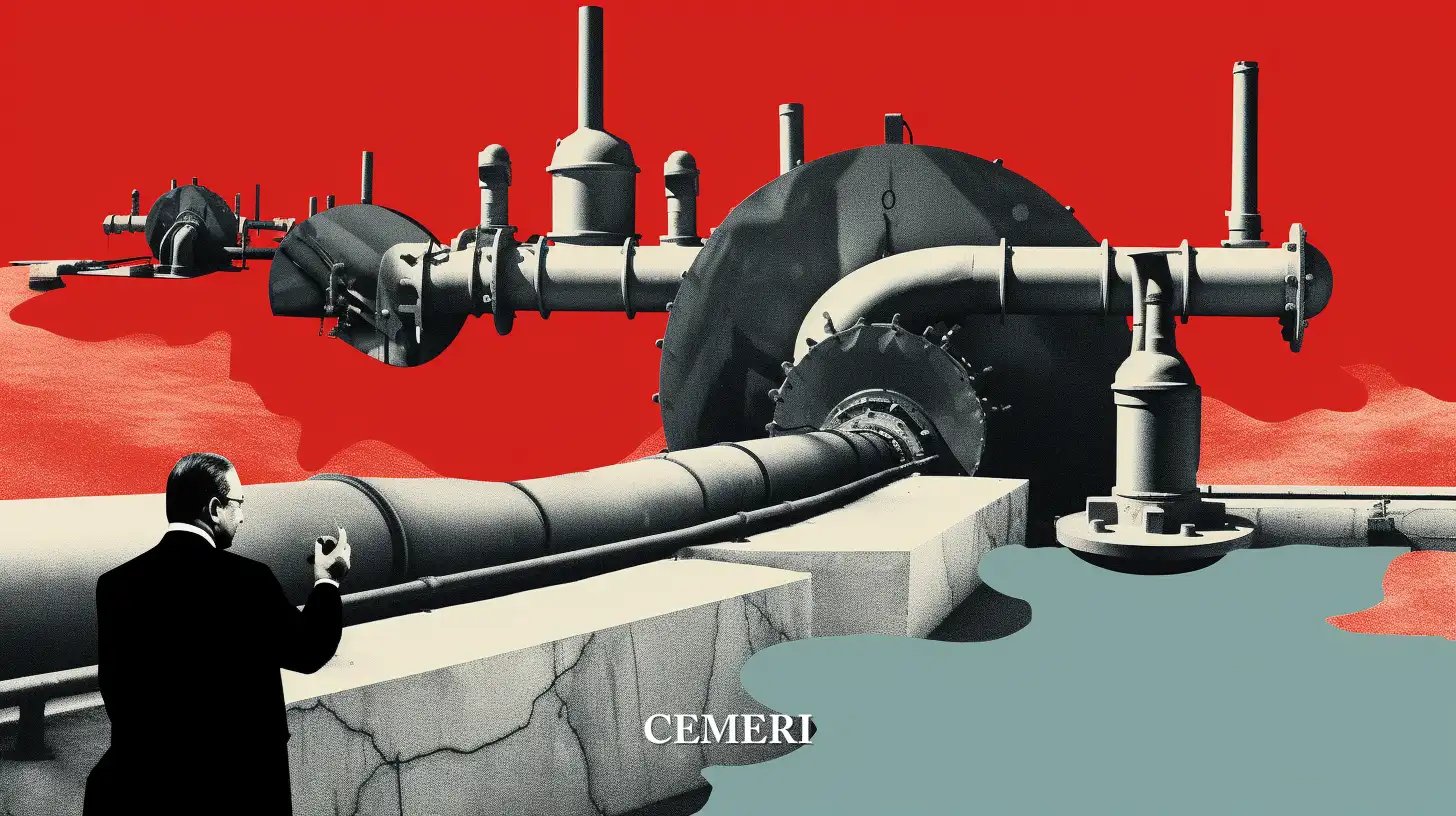Analysis
Patricio Martínez
Could a 2006 photo reveal the origin of the war between Armenia and Azerbaijan?
- A photograph taken in 2006 could reveal the future plans of Azerbaijan and Turkey in the Caucasus.

“One nation, two states” - this is how the first president of Azerbaijan, Heydar Aliyev, used to refer to his country's relations with Turkey. [1]
It is not for less, since both nations of Turkic origin share great linguistic and cultural similarities. Despite the fact that the history of the region has marked the domination of the current territory of Azerbaijan by Iran and Russia, relations with Turkey have been fraternal and close, especially since Azerbaijan's independence from the Soviet Union and its conflicts with Armenia.
But there is something that prevents the relationship between these two countries from being even closer: geopolitics; At first glance it might seem that in addition to the separation of Azerbaijan with its enclave in Nakhchivan, Armenia also separates the country from Turkey, but this is not entirely accurate, since both countries share a border that is barely 17 kilometers long at the far end. western Nakhchivan.
This narrow border is of great strategic importance. Although there is a much longer one with Iran, the relationship between the two countries is cordial but tense due to the independence aspirations of some Azeri groups in Iran (the northwestern provinces of Iran are majority Azeri), this leaves the border with Turkey as the only with which you can have a degree of certainty and security.
Although Nakhchivan is not completely surrounded thanks to this small border and can trade its raw materials with Turkey, the reality is that it is isolated from the rest of Azerbaijan and from the economic and political center centered on the Absheron Peninsula, where the Baku capital. Armenia, specifically the province of Syunik has played a key role in this separation. Following the various conflicts that plagued the South Caucasus after World War I, the Syunik region was finally assigned to the Socialist Republic of Armenia in 1921 by Joseph Stalin (among other territorial changes including the transfer of Nagorno Karabagh to Azerbaijan). . [2]
At the time this was not of significant importance due to the existence of the Soviet Union, which allowed continuous and uninterrupted transit between the regions, but with its dissolution and the independence of both republics, it meant a real obstacle for Azerbaijan which It intensified with the Nagorno-Karabakh War, which further alienated both territories.
However, all this has turned around in recent weeks and could turn the geostrategic situation for Azerbaijan in its favor. The defeat of the forces of the self-proclaimed Republic of Artsakh ensured that Baku could not only recapture a significant part of its territories, but also achieved a stronger position in the ceasefire negotiations mediated with Russia, which included a point extremely important: A land corridor between Azerbaijan and Nakhchivan through the Armenian province of Syunik, which will be under the control of the Russian armed forces. Although this is in exchange for a corridor between Armenia and the now reduced territory of Artsakh, undoubtedly the corridor to Nakhchivan is more strategic and a significant gain for Baku.
Map showing corridors to Nagorno-Karabakh and Nakhchivan.
During the latest clashes in Nagorno Karabagh and the subsequent Azeri victory, it has not been unusual to find irredentist images on Turkish and Azeri social media (showing even the annexation of the two southernmost provinces of Armenia) officially Azerbaijan's territorial claims do not include no territory internationally recognized by Armenia.
Image shared on social media showing Azeri irredentist claims.
Officially, Azerbaijan does not claim any Armenian territory in Syunik, including the corridor that will begin operating under Russian surveillance, but some signs indicate that there is a possibility that Ankara and Baku could be under consideration for territorial annexation for some time. On July 13, 2006 in the Turkish city of Adana, the Baku-Tbilisi-Ceyhan Oil Pipeline was officially inaugurated by Presidents Ahmet Necdet Sezer of Turkey, Ilham Aliyev of Azerbaijan, Mikhail Saakashvili of Georgia and then Turkish Prime Minister Recep Tayyip Erdogan. . Although the same geopolitical study of the pipeline (which is diverted by a longer route so as not to transit through Armenia) what is interesting in this particular case is the map of Azerbaijan, which has a direct corridor with Nakhchivan, eliminating the land connection of Armenia with Iran and creating a direct route from Baku to Ankara. A 14-year-old photograph, which then went relatively unnoticed, has resurfaced, showing what could perhaps be a future setting. [3]
2006 meeting of leaders Türkiye, Georgia and Azerbaijan in Adana.
Source: Reuters.
At the moment it is still not clear what could happen to the Syunik corridor after the 5 years in which Russian troops will control it. But if it is finally consolidated as Azeri territory, Turkey and Azerbaijan will fulfill a long-awaited goal that will further strengthen both their economic and sociopolitical ties, Turkey will be able to continue increasing its influence around it and perhaps project it more efficiently to the Turkic nations of Asia. Central, all this at the expense of Armenia, which will face even more geostrategic challenges as it finds itself surrounded on three sides by the nations with which it has had the greatest rivalry.
Sources
[1] Aliyev, Hyedar. Joint press statements of Presidents of Azerbaijan and Turkey. 15 de septiembre de 2010. https://en.president.az/articles/736/print. (último acceso: 15 de noviembre de 2020).

